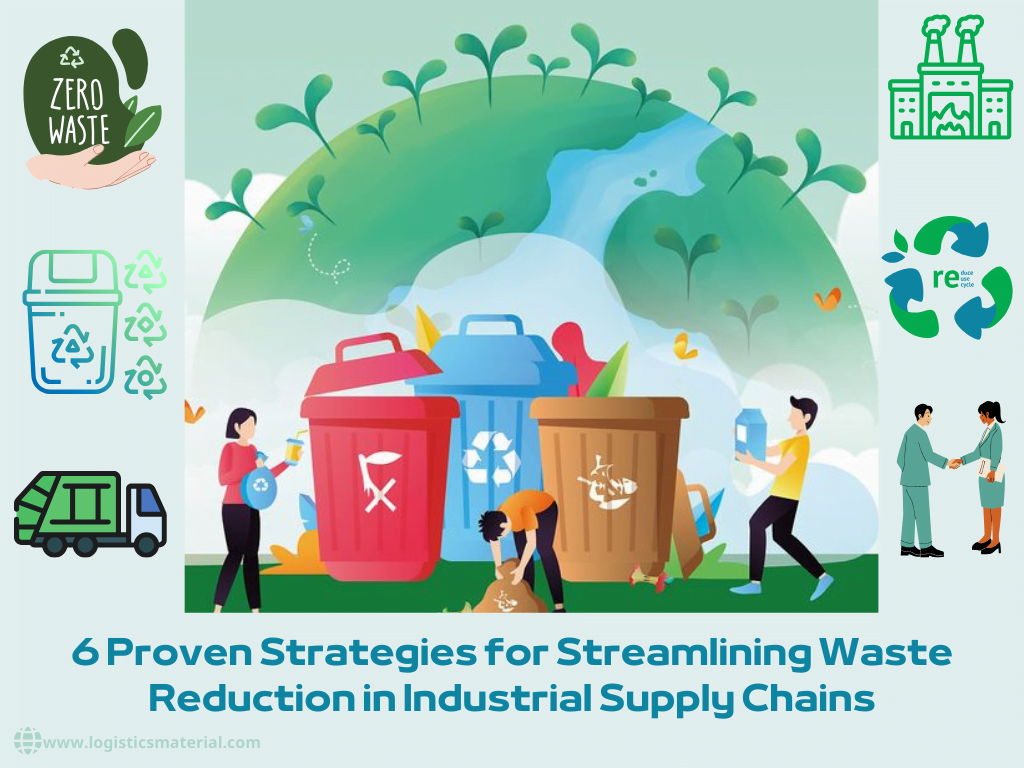6 Proven Strategies for Streamlining Waste Reduction in Industrial Supply Chains
Waste reduction is critical to sustainability and efficiency in industrial supply chains. By implementing effective strategies to streamline waste reduction, companies can not only minimize their environmental impact but also improve their bottom line.. From leveraging technology and data analytics to fostering a culture of continuous improvement, these strategies are designed to help organizations enhance their operations while contributing to a more sustainable future. Let’s delve into the key tactics and best practices for streamlining waste reduction in industrial supply chains.
Understanding the importance of waste reduction in industrial supply chains
Understanding the importance of waste reduction in industrial supply chains In the realm of industrial companies, waste reduction is not just a buzzword – it is a critical aspect that directly impacts the sustainability and efficiency of supply chain operations. The significance of waste reduction in industrial supply chains cannot be understated.
By minimizing waste at every stage of the supply chain process, companies can achieve several key benefits, including cost savings, enhanced environmental sustainability, improved resource efficiency, and increased overall competitiveness in the market. At its core, waste reduction in industrial supply chains is about optimizing processes, materials, and resources to minimize excess and inefficiencies. This can involve strategies such as lean manufacturing principles, just-in-time inventory management, waste segregation and recycling programs, energy-efficient practices, and continuous improvement initiatives.
By understanding the importance of waste reduction and implementing effective strategies, industrial companies can not only reduce their environmental footprint but also drive positive outcomes for their bottom line and long-term success.
However, addressing these waste issues isn’t without its challenges. Logistics challenges, such as optimizing transportation routes, minimizing packaging waste, and ensuring efficient warehousing practices, all play a significant role in achieving successful waste reduction throughout the supply chain. Implementing a comprehensive waste reduction strategy requires a holistic approach that considers and addresses these logistical hurdles.
Let's delve into the 6 Proven Strategies and best practices for streamlining waste reduction in industrial supply chains
1) Conduct a waste audit
This is a crucial step in any effective logistics strategy for streamlining waste reduction within industrial supply chains. By analyzing and understanding the types and quantities of waste generated at different stages of the supply chain, businesses can identify opportunities for improvement and implement targeted strategies to reduce waste.
The waste audit process typically involves assessing current waste generation practices, quantifying the volume and composition of waste streams, and evaluating existing waste management systems. This data-driven approach allows businesses to pinpoint areas of inefficiency, set specific waste reduction goals, and track progress over time. Ultimately, conducting a waste audit empowers industrial supply chains to implement tailored solutions that minimize waste, enhance resource efficiency, and drive sustainable practices across the organization
2) Implement lean manufacturing principles
Implementing lean manufacturing principles is a key strategy for streamlining waste reduction in industrial supply chains, and will likely remain so in the future of logistics. Lean manufacturing focuses on maximizing value while minimizing waste in all aspects of production. By implementing lean principles, companies can identify and eliminate activities that do not add value to the final product, ultimately reducing waste and improving efficiency.
One of the core principles of lean manufacturing is identifying and eliminating the 8 types of waste: overproduction, waiting, transportation, extra processing, inventory, motion, defects, and underutilized talent. By addressing these areas of waste, companies can streamline their processes, reduce costs, and improve overall productivity.
Another key aspect of lean manufacturing is implementing a continuous improvement mindset. By encouraging employees at all levels to identify opportunities for improvement and implement solutions, companies can continually optimize their processes and reduce waste over time.
Overall, implementing lean manufacturing principles is essential for streamlining waste reduction in industrial supply chains, and will be a critical factor in shaping the future of logistics operations.
3) Optimize packaging and materials handling
Within the realm of industrial supply chains, optimizing packaging and materials handling is the cornerstone of effective logistics strategies for streamlining waste reduction. By implementing efficient solutions in these areas, companies can significantly minimize environmental impact and create a more sustainable operation.
One key approach involves a shift towards reusable packaging. Replacing single-use options with durable alternatives like refillable containers or pallets creates a circular economy within the supply chain. This not only minimizes waste generation but also delivers long-term cost savings through reduced packaging material expenditure. However, implementing reusable packaging solutions requires a comprehensive logistics strategy. Ensuring proper cleaning and sanitation of these materials, managing the return logistics for used packaging, and potential compatibility issues with existing systems are all factors to consider.
Beyond packaging, optimizing material flow processes plays a crucial role in waste reduction. Logistics strategies such as lean manufacturing principles and just-in-time inventory management can significantly reduce excess materials by ensuring only the necessary quantities are procured and used at each stage of production. Additionally, investing in automation technologies for tasks like picking and packing can streamline material handling, minimizing human error and potential product damage that might otherwise lead to waste. Furthermore, optimizing storage and retrieval systems through strategic warehouse layouts and efficient inventory management software can further reduce waste by minimizing material handling inefficiencies and ensuring proper stock rotation.
By embracing these logistics strategies for optimizing packaging and materials handling, industrial supply chain companies can significantly reduce waste generation, enhance resource efficiency, and contribute to a more sustainable future. This not only benefits the environment but also translates to long-term cost savings and a more responsible brand image.
4) Embrace circular economy practices
Embracing circular economy practices is a key strategy for streamlining waste reduction in industrial supply chain. The concept of a circular economy is centered around reducing waste and maximizing the use of resources by keeping products and materials in use for as long as possible. By implementing circular economy principles in industrial supply chains, businesses can minimize waste generation, reduce environmental impact, and create a more sustainable and efficient production process.
One way to embrace circular economy practices is by designing products with longevity and recyclability in mind. This involves using durable materials, designing products that are easy to repair and upgrade, and incorporating recyclable materials into the production process. By creating products that are built to last and can be easily disassembled and recycled at the end of their life cycle, businesses can reduce waste and minimize the environmental impact of their operations.
Another important aspect of embracing circular economy practices is implementing reverse logistics systems to facilitate the collection and recycling of end-of-life products and materials. By establishing a system for collecting and reusing or recycling products at the end of their life cycle, businesses can reduce waste sent to landfills and promote the reuse of valuable resources. Additionally, by working with suppliers and partners to create closed-loop supply chains, businesses can ensure that materials and products are continually reused and recycled, further reducing waste and promoting sustainability.
Overall, embracing circular economy practices is a critical strategy for streamlining waste reduction in industrial supply chains. By designing products for longevity and recyclability, implementing reverse logistics systems, and creating closed-loop supply chains, businesses can minimize waste generation, reduce environmental impact, and create a more sustainable and efficient production process.
5) Collaborate with suppliers and partners
Collaborating with suppliers and partners is a key strategy in streamlining waste reduction in industrial supply chains. By working closely with your suppliers and partners, you can identify areas where waste can be minimized or eliminated throughout the supply chain process. This collaboration can involve sharing best practices, setting common goals for waste reduction, and implementing joint initiatives to improve efficiency and sustainability. By fostering strong relationships with your suppliers and partners, you can create a more integrated and coordinated approach to waste reduction, leading to a more sustainable and environmentally friendly supply chain.
6) Monitor and track progress through Key Performance Indicators (KPIs)
Monitoring and tracking progress through Key Performance Indicators (KPIs) is crucial when implementing waste reduction strategies in industrial supply chains. By establishing specific KPIs related to waste reduction goals, companies can effectively measure their performance and identify areas for improvement. These KPIs can include metrics such as waste generation rates, recycling rates, landfill diversion rates, energy consumption, and water usage. By regularly monitoring and analyzing these KPIs, companies can gain valuable insights into their waste reduction efforts and make data-driven decisions to streamline their supply chain processes. Additionally, tracking progress through KPIs enables companies to set benchmarks, track trends over time, and demonstrate the effectiveness of their waste reduction initiatives to stakeholders and customers. This data-driven approach not only helps companies achieve their sustainability goals but also drives continuous improvement and innovation in waste reduction practices within industrial supply chains.
Conclusion
In conclusion, we have explored six proven strategies for streamlining waste reduction in industrial supply chains. By implementing these strategies, companies can not only reduce waste but also improve efficiency, save costs, and contribute to a more sustainable future. Industrial companies must prioritize waste reduction in their supply chains to minimize environmental impact and align with global sustainability goals. By taking proactive steps and leveraging innovative solutions, companies can transform their operations and make a positive impact on both the environment and their bottom line. Let’s work together towards a more sustainable and efficient future in the industrial supply chains.

